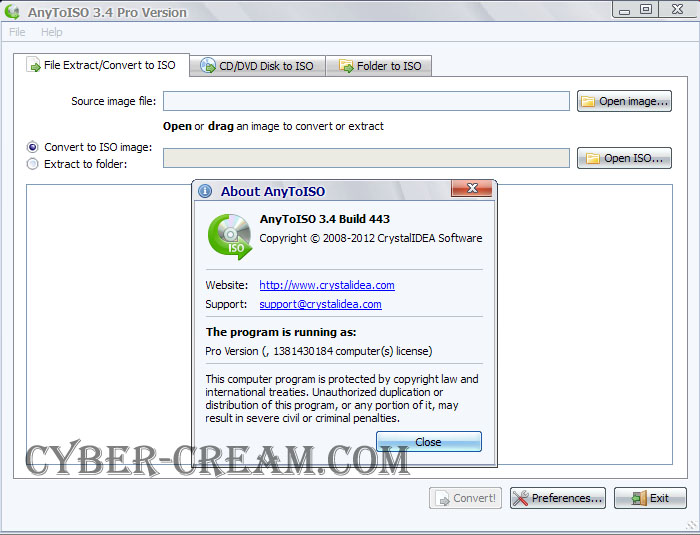

#Backup sd with anytoiso archive#
Downloaded a CD/DVD image or archive in an unknown. Create ISO's from almost anything, including all CD/DVD image formats popular on Internet, CD/DVD/Blue-ray disks, or simply from a local folder. Old Versions: AnyToISO is the ultimate ISO creator for Windows PC. Backing up and restoring image files isn’t too bad. Author / Product: CrystalIDEA Software / AnyToISO. In the Imager, select the sd_card_backup.img for the “Image File,” and select the drive letter of the SD Card (e.g.
#Backup sd with anytoiso .exe#
exe (Note: you might have to run the Disk Imager utility under an administrative account). Then, download Win32 Disk Imager, unzip it, and run the. You’ll want to first use a program like 7-Zip to unzip the image. sudo gzip -dc /path/to/sd_card_ | sudo dd of=/dev/X In Linux, we can perform the opposite operation: unzip the image file and use dd to copy it directly to the SD card. That’s it! If something goes awry, restoring is easy. sudo dd if=/dev/X | gzip > /path/to/sd_card_ If Linux auto-mounted any of the partitions, make sure to unmount those.Ĭopy and compress the card to a location of your choosing. To figure out where the SD card is located (mine is /dev/mmcblk0). Plug in the SD card and issue the command ls /dev If you use gzip, people on Linux/Mac can unzip it pretty easily and Windows people can use 7-zip. I recommend using Linux to copy and zip the file in one fell swoop. With a relatively small SD card (say, 4GB), you can copy the whole card, zip it, and be able to store/share the image file. Let’s say you’re trying to build Linux for your single board computer, and you need to back up the operating system (which, more than likely, is on an SD card).
#Backup sd with anytoiso how to#
Whatever method you choose for writing data to USB or SD flash, knowing how to use Etcher can save you time.Backing up an image for the Raspberry Pi, BeagleBone Black, OLinuXino, etc. It's also available for all desktop operating systems. This is a desktop app that allows easy, intuitive, mouse-controlled creation of a bootable USB or SD card with an ISO or IMG file. To many users, the dd command is the pinnacle of writing a disk image to USB or other flash storage.īut if you use Windows, or simply don't want to mess around in the terminal, there's a great piece of software called Etcher. Use the following command to unmount your SD card: diskutil unmount /dev/SDcardname. Next, click on Choose ISO and select the save location for the ISO file. Next, click on Browse for Folder and select the folder you want to convert to an ISO image. Check the listed device name for your SD card. Launch AnyToISO and open the Folder to ISO tab. Open the terminal and type this command: diskutil list. Insert the Raspberry Pi SD card into your Mac device. Meanwhile, you can use the dd command to write data to a USB stick in Linux and macOS. How to Backup Your Raspberry Pi SD Card on Mac.

This can then be used as a backup, ready to image one or more new computers. For example, Linux, macOS, and Windows installations can be converted into a disk image. What Is the Best Way to Write an ISO to USB?Īll operating systems have their own methods for writing an ISO or IMG disk image to USB or SD flash cards. This guide will show you how to write an ISO file to USB with Etcher, whatever operating system you use. That’s where Etcher from Balena comes in. While operating systems have the feature built in, it is difficult to use.


 0 kommentar(er)
0 kommentar(er)
